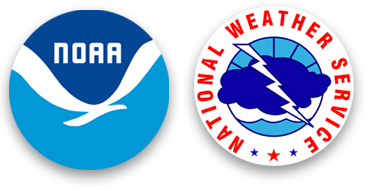The Weather Office of the Future: Introducing AFOS - National Weather Service Heritage
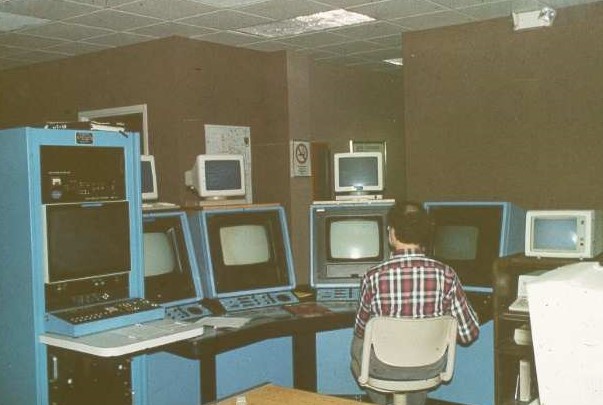
The Weather Office of the Future: Introducing AFOS
By Chris Geelhart (chris.geelhart@noaa.gov)above: AFOS displays at the NWS office in Topeka, KS
For many decades, the Weather Bureau (and later the National Weather Service) utilized facsimile machines to receive weather maps, as well as teletype systems to distribute weather forecasts and warnings. Computer systems had been employed at the National Meteorological Center since the 1950s for producing forecast models. In the 1970s, the NWS decided to bring the local offices into the modern era, after completing studies on the feasibility of automatic data processing at its field offices.
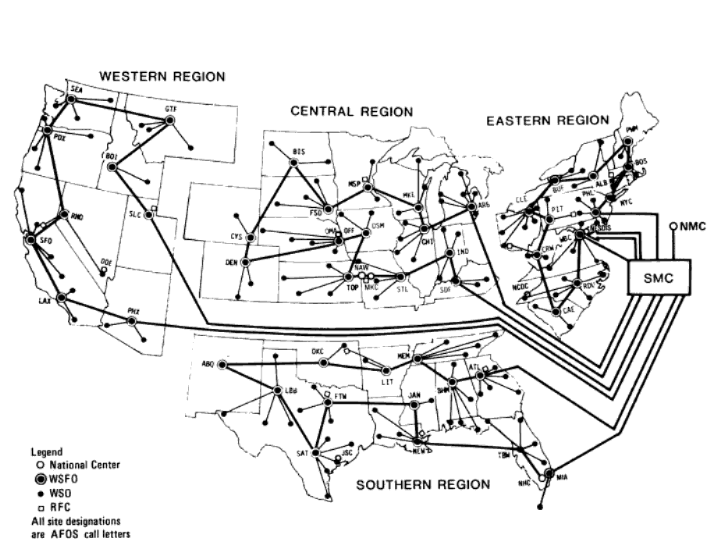
The Automation of Field Operations and Services (AFOS) was proposed in 1974. The AFOS would use minicomputers at approximately 200 NWS offices, with alphanumeric and graphic displays to view weather maps and compose forecasts and warnings. A closed loop network would connect the Weather Service Forecast Offices (WSFO's), based on their regional assignments, and three national centers with a System Monitoring and Coordination Center (SMCC) in Maryland. The local Weather Service Offices (WSO's) and River Forecast Centers (RFC's) would be connected to their parent WSFO's for data access. In the event of an AFOS failure at an individual WSFO, that office could be bypassed on the network, with its associated WSO/RFC systems dialing directly into the SMCC to remain on the network.
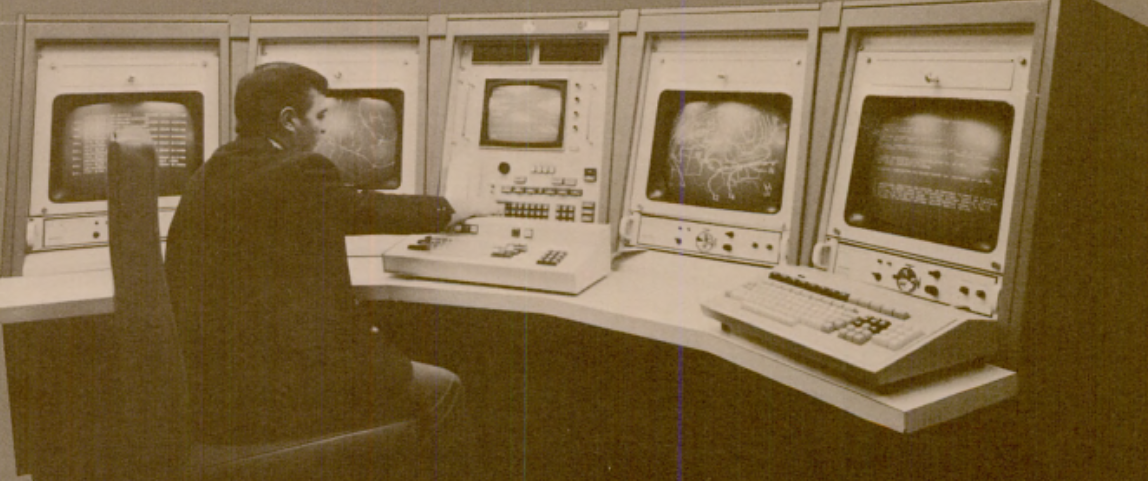
An experimental facility was established in Silver Spring, MD in 1974, to evaluate the console design, and a simulated forecast experiment called CRAB (Chesapeake Region AFOS/Satellite Weather Broadcast) was conducted in 1975 to evaluate its operation. Besides evaluating the AFOS itself, the CRAB experiment also involved tests of automated forecast products.
On January 30, 1976, the Department of Commerce signed a contract with Aeronutronic Ford Corporation to develop and install 213 AFOS systems over a 5 year period. Plans were to begin fielding the systems in 1978, beginning with the WSFO in Pittsburgh, with completion in 1980. All 52 WSFO's would receive an AFOS; 94 WSO's and 51 Weather Service Meteorological Observatories (WSMO's) were not included in the initial contract. However, analysis was conducted for these latter offices, to determine whether they should later receive a full AFOS system or an alphanumeric terminal only (known as a Remote Terminal to AFOS, or RTA).
Automated forecast techniques were evaluated at the AFOS Experimental Facility, for later integration into the system. Computer Worded Forecasts had been tested as far back as 1970, and could be used as the starting point for the routine forecast elements. Aviation forecasts would be monitored by automatically comparing surface observations to the forecast, and alerting the meteorologist when the forecast was moving out of tolerance. A program was developed to facilitate pilot weather briefings.
Deployment of AFOS ran into hurdles. The system ran behind schedule and over budget, and was not able to meet all of the original plans for forecast usage. The complexity of the network, along with poor design, made it difficult to make the needed changes. By 1981, the network was only completed in two of the four contiguous U.S. (CONUS) regions. While plans were made to completely replace the network with a new system toward 1990 (later known as the Advanced Weather Information Processing System, or AWIPS), the deployment of AFOS continued, but was halted after 1982. Deployment to the Alaska and Pacific Region NWS offices never occurred.
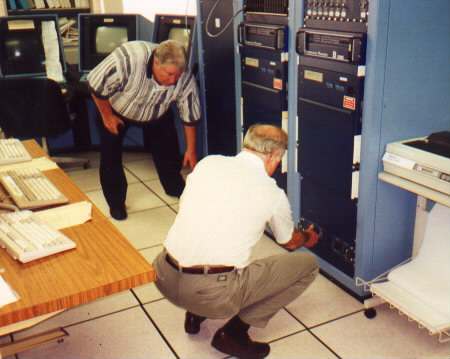
Weather Building, May 17, 2000.
While the development of AWIPS took place, the AFOS network continued operating into the 1990s. Some upgrades were made to AFOS, to increase storage and communications capacity. As the NWS office network modernized in the 1990s, the offices continued to rely on the AFOS communications, though programs on personal computers (connected to the AFOS network) were starting to supplant the display usage of AFOS itself. By the end of the decade, AWIPS had been deployed to all offices, and AFOS was generally relegated to a corner, before the system was completely decommissioned in 2000. However, a remnant of AFOS lives to this day -- some of the commands used in the AWIPS text displays continue to utilize their AFOS ancestors.
